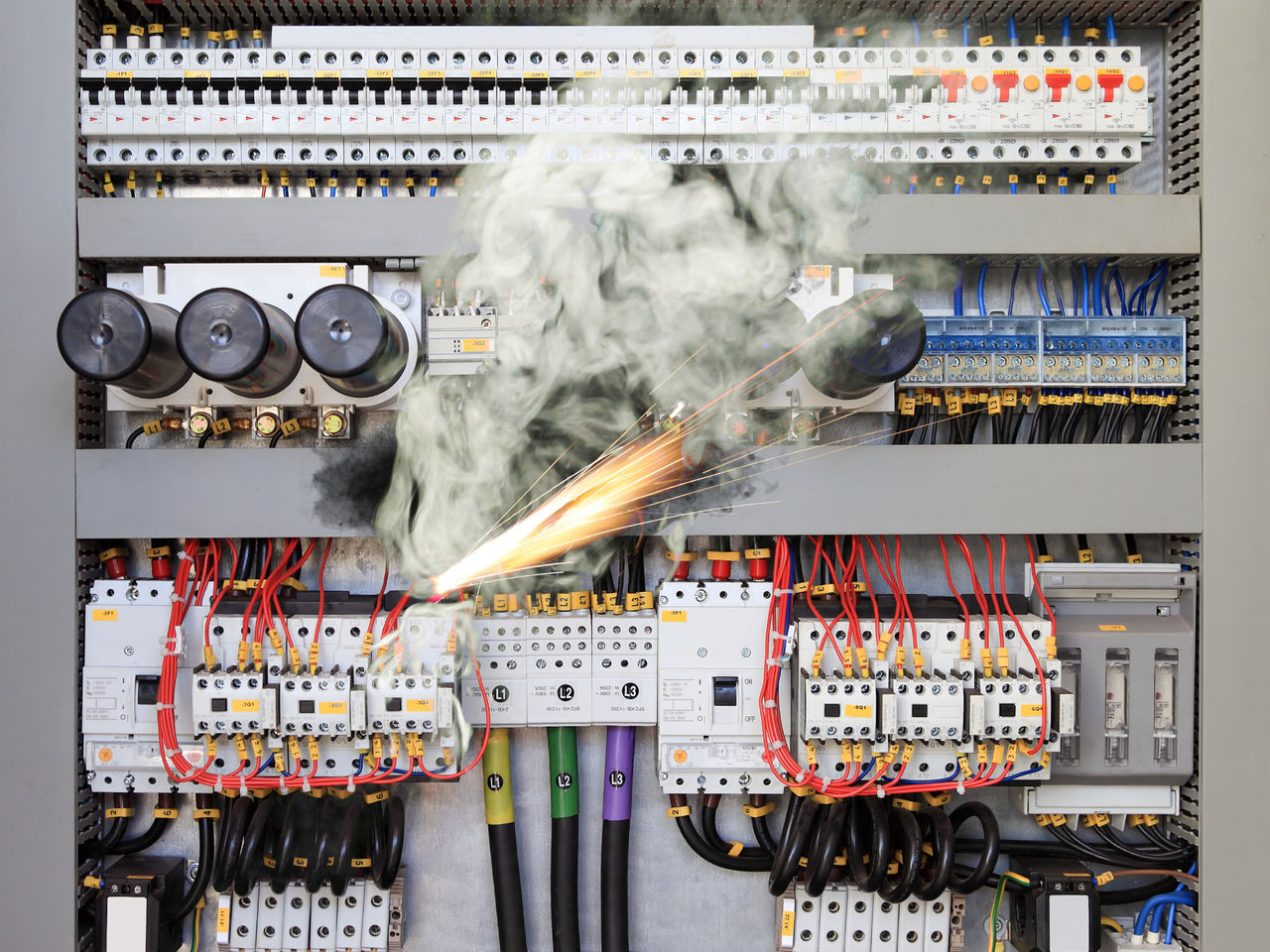In this article
The short cut to optimum short circuit protection
What happens in an accidental electrical short circuit? A violent, catastrophic explosion; extensive equipment damage; serious risk to plant and personnel. Clearly, cutting corners on short circuit mitigation and protection is not an option. But with the help of Panduit, you can take a short cut to the optimum solution.

Protecting project, people and equipment from short circuit events means investing in short circuit protection which complies with IEC 61914. Do this at the start of the project, and downtime can be reduced, damage to equipment avoided, and the workforce protected from significant injuries or death. To understand the most effective way to protect against these electrical incidents, you need to know their cause, and just how much damage they can do.
0.06 seconds from disaster
A short circuit fault can happen when an abnormal connection is made between two nodes of an electric circuit. Short circuit events can create current levels in the region of 200kA. The power cables will be repelled away from each other, unleashing forces which will damage everything in their path.
The maximum electro-mechanical stress between the conductors will occur at or before 0.005 second. But typical circuit breakers and other protection devices won’t trip and interrupt the fault until between 0.06 and 0.1 second – more than enough time for substantial damage to equipment, and high risk to employees.
The solution is to act faster than 0.06 seconds.
Setting-up for success
By restraining cables during the first 0.005 second of peak kA – before a circuit breaker trips and interrupts a fault – cable cleats mitigate the effects of the short circuit, and reduce damage and rework.
Cables are generally distributed by cable ladder or cable tray systems – but they are only truly safe and viable when paired with the right cable cleat. So how can you be sure you have the right cleat?
Firstly, the IEC 61914:2015 Standard provides the testing methodology and process to ensure cable cleats’ reliability, and ultimate protection in the event of a short circuit. Secondly, Panduit’s extensive line of cable cleats provides all the options you need for productivity, reliability and safety – cost-effectively and with minimum installation time.
Cleat or ‘cheat’?
Though not widely known as a cable cleat solution, the Panduit Stainless Steel Strap and Cable Tie is proven and tested to comply with IEC 61914. It can also cost less than half the price of traditional cleats, and be installed in half the time.
Compatible with a variety of cable trays and cables, the Panduit Stainless Steel Buckle Strap Cleat has a low finished profile, and rounded edges to prevent cable damage. It also locks the cut end inside the buckles after tensioning, so no sharp edges are left exposed.

Also made from stainless steel, the Panduit Trefoil Cleat features a nylon insert lock nut to dampen vibration. It has a mounting bracket slot which allows for flexibility of installation, and a removable spacer. There’s also a tightening bolt which can be installed from top or bottom.
Alternatively, the corrosion-resistant Panduit Polymer Trefoil Cleat features dual bolt installation, and has rounded edges to protect the cables from damage. Integrated ridges hold the cables in place.
Selecting a cable cleat
When selecting Cable Cleats, there are five key factors to consider:
- Cable layout: how are the cables arranged and secured?
- Cable outer diameter: what diameter is the cable? This measurement is also needed for calculating the potential short circuit forces
- Peak short circuit current rating: in kA
- Cleat spacing: in cable tray or ladder
- Operating environment: what material and specification features are required e.g. resistance to fire, extreme cold, chemicals, corrosion.
Panduit’s Cleat kAlculator™ helps engineers, designers, and installers determine the correct cable cleat for their application in three easy steps. It is available for download from the Apple Store or Google Play, and on the Panduit website.
With so many options to choose from, you may need the support of Panduit’s dedicated team of Cable Cleat Engineers, who can help with technical and pre-sale support, installation and configuration inquiries, and custom-engineered cleat solutions for demanding applications.
For a short-cut, you can contact your local ERIKS Service Centre, who will be happy to discuss your options.
#Panduit #ERIKS #LetsMakeIndustryWorkBetter #Electrical #CableCleats #Protection


